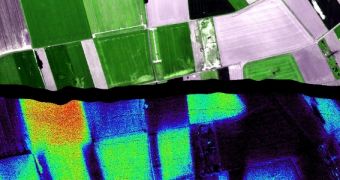As the European Space Agency (ESA) gears up towards a final selection for its eighth Earth Explorer mission, scientists with the Forschungszentrum Jülich research center in Germany and the Finland-based company Specim propose a satellite that would be able to analyze vegetation fluorescence.
In humans, a glowing skin – regardless of color – is the hallmark of good health. Experts behind the Hyplant airborne sensor and the Fluorescence Explorer (FLEX) satellite say that the same holds true in plants as well. When in good health, many types of vegetation can be seen fluorescing.
The Hyplant sensor is so sensitive to this phenomenon that it can collect data from space, potentially providing a new tool for scientists to keep track of vegetation health and productivity around the world. Launching the FLEX satellite could therefore mark the beginning of a new era in terms of planning food security.
Additionally, if ESA selects this mission, climatologists will have a new tool available to understand how carbon dioxide is exchanged between vegetation and the atmosphere. This process is very complex, and plays a role in both the water and carbon cycles on Earth. Despite the benefits of the proposed FLEX mission, it remains to be seen whether or not ESA will give this satellite the green light.

 14 DAY TRIAL //
14 DAY TRIAL //